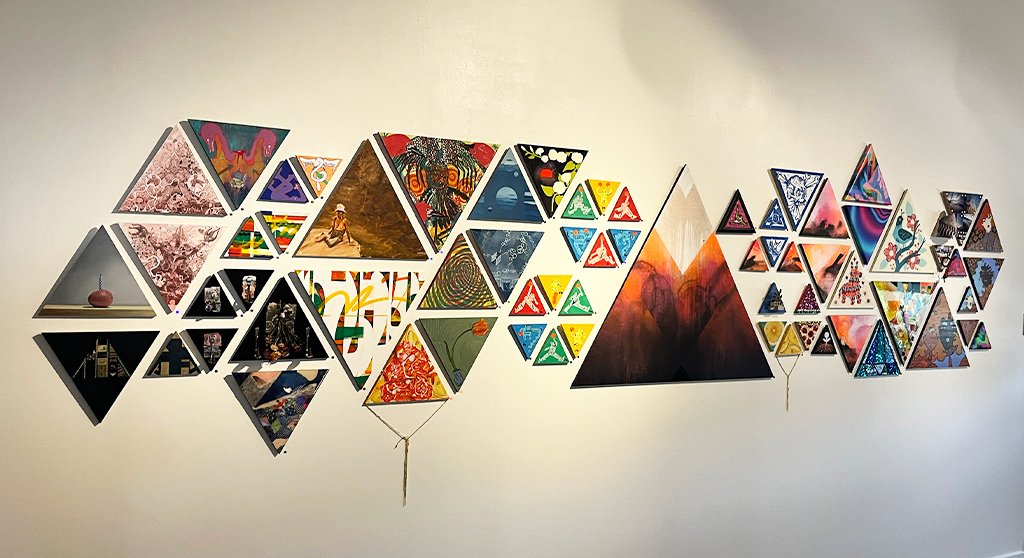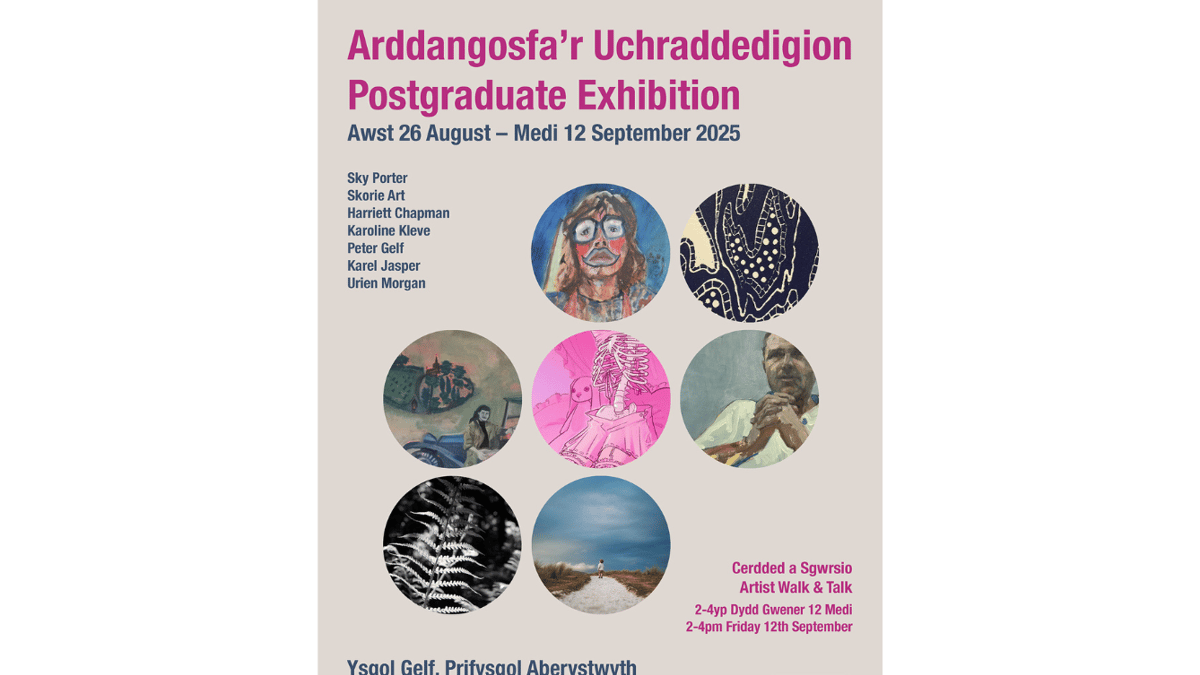
The big show at the Queens Museum this summer is a survey of the work of photographer Lyle Ashton Harris, “Our first and last love,” which collects art and ephemera from Harris’s life over the last thirty-five years. “He’s turned some three decades-worth of loosely curated personal accumulation into one of the most remarkable bodies of American art around,” Holland Cotter raved of the show, calling it “a data-dense, visually compelling archive, not just of one life but, as seen through that life, of the social and political history of Black queer culture in the post-Stonewall years.”
Taking special place in the show are Harris’s recent Shadow Works: vitrines that merge still lifes with Ghanaian textiles for a funerary effect. Observer recently caught up with Harris to hear more about how the show came together.
You came to the title of this show through a fortune cookie. Can you tell us a little more about the fortune and its place in your life?
I received the message “Our first and last love is. . . self love” in a fortune cookie while I was visiting Seattle with my friend Tommy Gear in the early 1990s, and I saved it in my journal. A few years later, Creative Time commissioned me, along with two dozen other artists, to produce site-specific public artworks for its 42nd Street Art Project, which was presented in 1993-94. At the time I had been considering the use of language and text in artworks, so I used that fortune cookie message to produce a neon artwork that people might find surprising to encounter in the vicinity of New York’s Times Square. Its message about self-love holds particular significance for me as a queer person, whose sexuality and desires have been historically marginalized, if not condemned and outlawed. Our self-love is fundamental to cultivating compassionate care and empathy for ourselves and others.
You seem to be someone who has accumulated a great deal of material from your life and your practice. How did you determine what was going to be in this show?
My archival impulse is quite strong, which follows on the tradition of artists revisiting themes, memories and experiences they consider still relevant or unresolved. I was approached in late 2020 by curator Caitlin Julia Rubin who proposed mounting an exhibition of selected works that I had produced over the last three decades, and Lauren Haynes subsequently joined her as co-curator the following year. I expressed to them my interest in conveying the resonance of my past artworks with present-day concerns and finding ways to distinguish this presentation from an earlier survey exhibition of my work at the Scottsdale Museum of Contemporary Art in 2008. Working with the co-curators was an integral process of highlighting salient themes first emerging in my early work that are further elaborated in my recent Shadow Works series, a selection of which anchors the exhibition. Initially presented at Brandeis University’s Rose Art Museum and at Duke University’s Nasher Museum of Art in 2023, “Our first and last love” traveled to the Queens Museum in New York City this year, and will be on display through mid-September.


The Queens Museum is a unique institution on the New York landscape. How did this venue affect the exhibition’s content?
As a community-based cultural institution, the Queens Museum is known for showcasing a diverse range of high-quality local and international artists. Located on the site of two previous World’s Fairs as well as having served as the first U.S. home to the UN General Assembly before it relocated to Manhattan, the building’s historic provenance entails certain constraints not typical of most contemporary art museums, which impacts the extent to which its galleries may be physically configured to accommodate artworks. This afforded an opportunity to work closely with the co-curators and the museum’s director Sally Tallant, actually expanding the presentation of artworks included in the exhibition, which spills beyond the large main gallery onto its exterior walls facing the museum’s central atrium as well as into an adjacent space that accommodates a discrete video installation.
Your newer works do much with the color red. Why are you drawn to this color?
Color has always played a prominent role in my work—from my first 1994 solo exhibition at Jack Tilton Gallery in New York, which comprised a series of studio portraits of family and friends shot using a large-format Polaroid 20×24-inch camera against a background of velvet fabric panels in red, black and green, the original tricolors adopted by Marcus Garvey’s Universal Negro Improvement Association (UNIA) in the 1920s as the official banner of people of African descent globally, and that continue to serve as an emblem of Black pride. In my recent Shadow Works series, I was drawn to the traditional use of color in Ghanaian textiles as a signifier with layered meanings, in particular their use in Akan funerary rites, where mourners express their grief in wearing red and black wax prints as well as dark russet or indigo-colored mourning clothes. This chromatic spectrum’s varied meanings echo social tensions impacting the Black queer experience as well as contemporary initiatives to suppress—and in Africa to criminalize—same-sex love and communities. I discuss the significance of my use of color at length in a conversation with the co-curators published in the exhibition catalogue.
You’ve been using costumes throughout your career. How did this start, and what is its continued appeal?
I wouldn’t consider them to be costumes, per se. Since the late 1980s, I’ve explored performative self-portraiture as a way to interrogate gender norms and dominant narratives of Black masculinity. The earliest work included in the Queens Museum exhibition is titled Americas (Triptych), which was inspired by the gesturalism that characterized nineteenth-century minstrelsy and signifies vaudeville as well as contemporary transgressive drag performance. It’s not that my use of certain garments is limited to serving exclusively as a normative gender signifier, rather they support my embodiment of the queer sensibility that informs the subject matter of my work. The range of subject positions reflected in my self-portraiture has emerged out of having traversed and negotiated various global and transcultural spheres as a Black queer man.
Contemporary Africa seems to inspire you. Why is that?
Given my grandfather’s support for the goals of UNIA and the civil rights movement as well as his abiding interest in Pan-Africanism, my early childhood years in the Bronx were imbued with a deep appreciation for the richness of African culture. After my parents divorced, my mother accepted a teaching position in Dar es Salaam, Tanzania, where my brother and I spent a couple of formative years attending a Tanzanian English-speaking school and traveling with my mother throughout East Africa before returning to the States. My mother eventually remarried a South African man, my stepfather, an African National Congress freedom fighter in exile who was engaged in organizing resistance to that country’s apartheid regime overseas. After having grown up in Africa, upon returning I immediately felt confronted by our country’s stricter notions of hetero-normative masculinity together with the palpable undercurrent of violence in the U.S. As a Black queer adolescent, I soon found myself resorting to tropes of masking as a survival defense. Much later, in 2005, I returned to live in Africa over a period of seven years while teaching as a professor of art with NYU’s Global Program in Accra, Ghana. During that time I was introduced to an extensive global community of Ghanaian friends and entered into an extended personal relationship with an Ashanti man. As a direct outgrowth of those experiences, my Shadow Works series reflects the many deep connections that I made while living in Ghana and expresses the grief that I experienced upon moving on. Each work in the series is a unique assemblage containing photographic dye sublimation prints portraying studio wall collages that I photographed in chiaroscuro, which are inset against printed Ghanaian fabrics along with personal ephemera including cowrie shells, pottery shards, dreadlock clippings, and other mementos. Representing a montage of the personal and the political, these works not only frame a narrative reflecting my life experiences, but they serve as a particular lens focused on the sociopolitical history of Black queer life in the post-Stonewall era.


What feelings do you hope to inspire in visitors to this exhibition?
I was so pleased that “Our first and last love” opened at the Queens Museum in time for Pride month—a time in which positive energy supporting self-acceptance is in the air. This solo exhibition represents something of a homecoming for me, if you will, bringing works produced over three decades together in New York. And it’s inspiring to see how different generations connect with the work, whether those who’ve been familiar with it since the early 1990s or others who are encountering it here for the first time. It’s my hope that visitors will feel seen and be engaged by the vulnerability these works exemplify, inspiring them to bear witness to themselves with shameless authenticity.






